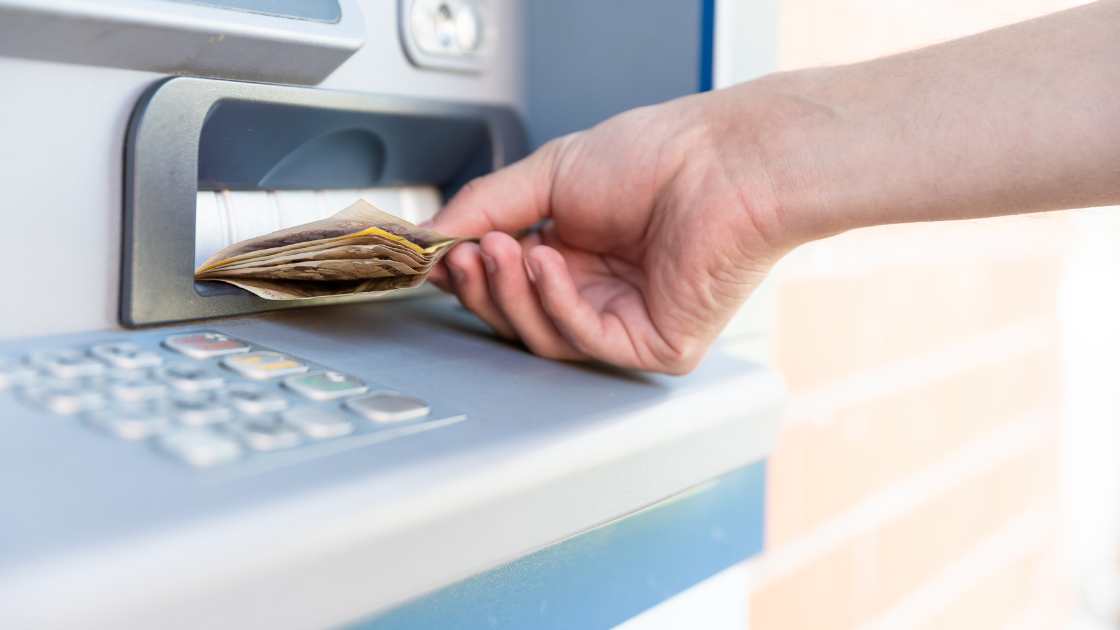How Much Money Does A Atm Hold
How Much Money Does A Atm Hold
Introduction
ATMs (Automated Teller Machines) have become an integral part of our daily lives, providing easy access to cash withdrawals and other banking services. But have you ever wondered how much money an ATM can hold? In this article, we will explore the estimated amount of money that an ATM can hold, the factors that determine its capacity, and some interesting facts about ATMs.
The capacity of an ATM
ATMs are designed to hold a certain amount of cash to meet the demands of their users. The specific capacity of an ATM can vary depending on various factors, such as the size of the cash cassettes, the type of ATM model, and the security measures in place. Here are some reliable estimates of how much money an ATM can hold:
1. Estimate 1: MoneyRyde's Analysis

According to a detailed analysis by MoneyRyde, an ATM can hold an average of $200,000 to $250,000. This estimate takes into account the standard size of cash cassettes used in most ATMs and assumes a mix of various denominations of currency.
2. Estimate 2: Communal Business Insights

Communal Business provides further insights into the capacity of ATMs, suggesting that the typical ATM can contain around $200,000. However, this estimate may vary depending on the specific model and configuration of the ATM.
3. Estimate 3: Industry Expert Observation

According to an industry expert, the maximum capacity of an ATM can reach up to $1 million in some cases. However, it's important to note that such high-capacity ATMs are usually deployed in highly secure locations, such as banks and financial institutions.
Factors Affecting ATM Capacity
The capacity of an ATM is influenced by several factors. The following factors play a significant role in determining how much cash an ATM can hold:
- Size of cash cassettes: ATMs typically utilize multiple cash cassettes to hold different denominations of currency. The size and number of these cassettes directly impact the total capacity of the ATM.
- ATM model and configuration: Different ATM models have varying capacities based on their design and specifications.
- Security measures: ATMs are equipped with security features, such as vaults and locks, to protect the cash inside. The level of security implemented can impact the available capacity.
- Demand and usage: The usage patterns and demand for cash withdrawals in a specific area can influence the cash replenishment frequency, which in turn affects the ATM's capacity.
Interesting Facts about ATMs
Aside from their capacity, there are various interesting facts about ATMs that you may find fascinating:
- The first ATM was installed in London in 1967.
- There are over 3 million ATMs worldwide.
- Japan has the highest concentration of ATMs, with approximately 138 ATMs per 100,000 adults.
- Some ATMs allow users to perform additional functions, such as depositing cash, paying bills, and purchasing prepaid cards.
- ATMs use encrypted technology to ensure the security of transactions and user data.
- The maximum amount of cash that can be withdrawn from an ATM in a single transaction varies by bank and country.
FAQs
1. What happens if an ATM runs out of cash?
When an ATM runs out of cash, users will not be able to make cash withdrawals. However, they may still be able to access other services, such as balance inquiries and fund transfers, depending on the availability of the ATM network.
2. How often are ATMs replenished with cash?
The frequency of cash replenishment depends on several factors, including the location of the ATM, the volume of cash withdrawals, and the availability of cash management services. ATMs in high-traffic areas are usually replenished more often to ensure uninterrupted service.
3. Are ATMs prone to theft?
ATMs are designed with security features to deter theft and protect the cash inside. However, they are not completely immune to theft attempts. Banks and ATM operators implement various security measures, such as surveillance cameras, tamper-evident seals, and alarm systems, to minimize the risk of theft.
Similar Topics to How Much Money Does A Atm Hold
- Factors Influencing the Demand for Cash
- The Evolution of ATMs and Their Impact on Banking
- The Future of Cashless Transactions: Will ATMs Become Obsolete?
In conclusion, the amount of money that an ATM can hold depends on several factors, including the size of cash cassettes, the type of ATM model, and the security measures implemented. While estimates suggest that an average ATM can hold around $200,000 to $250,000, the capacity may vary depending on specific circumstances. ATMs have revolutionized the way we access cash and banking services, and their continued evolution promises even more convenience in the future.
How Much Money Does A Atm Hold? [Comprehensive Answer] - CGAA.org
![How Much Money Does a Atm Hold? [Comprehensive Answer] - CGAA.org](https://img.youtube.com/vi/q9nkuYs0mCA/hqdefault.jpg) Image Source : www.cgaa.org
Image Source : www.cgaa.org How Much Money Does A Atm Hold?
 Image Source : www.linkedin.com
Image Source : www.linkedin.com How Much Money Does And ATM Hold - ATM Hold Deposit | Bitcovault Blog
 Image Source : bitcovault.com
Image Source : bitcovault.com How Much Money Does An ATM Hold? (4 Reliable Estimates) – MoneyRyde
 Image Source : moneyryde.com
Image Source : moneyryde.com How Much Money Does A Atm Hold - Communal Business
 Image Source : www.communalbusiness.net
Image Source : www.communalbusiness.net How Much Money Does An Average ATM Hold? – Measuring Stuff
 Image Source : measuringstuff.com
Image Source : measuringstuff.com How Much Money Does An ATM Hold? - [Shocking] - MoneyBriefcase.com
![How Much Money Does An ATM Hold? - [Shocking] - MoneyBriefcase.com](https://moneybriefcase.com/wp-content/uploads/2022/09/Black-and-Yellow-Abstract-Dots-Get-Money-Faster-YouTube-Thumbnail-1-1024x576.png) Image Source : moneybriefcase.com
Image Source : moneybriefcase.com How Much Money Does An Average ATM Hold? – Measuring Stuff
 Image Source : measuringstuff.com
Image Source : measuringstuff.com How much money does an average atm hold? – measuring stuff. How much money does a atm hold? [comprehensive answer]. How much money does a atm hold. How much money does a atm hold?. How much money does and atm hold